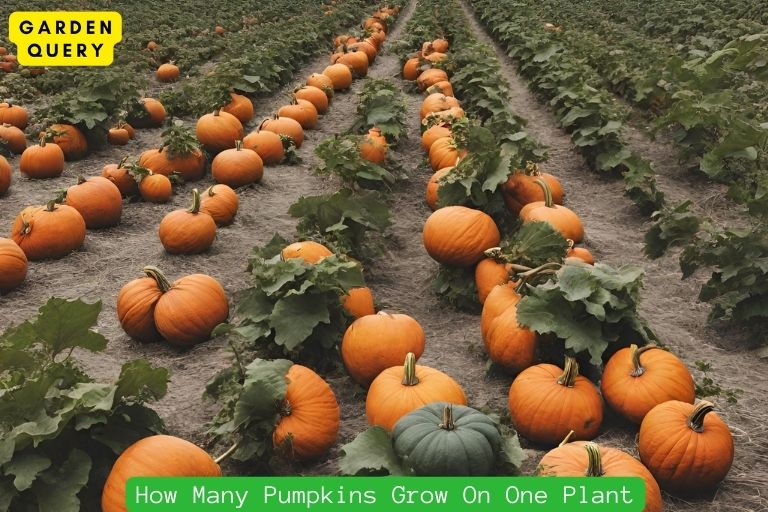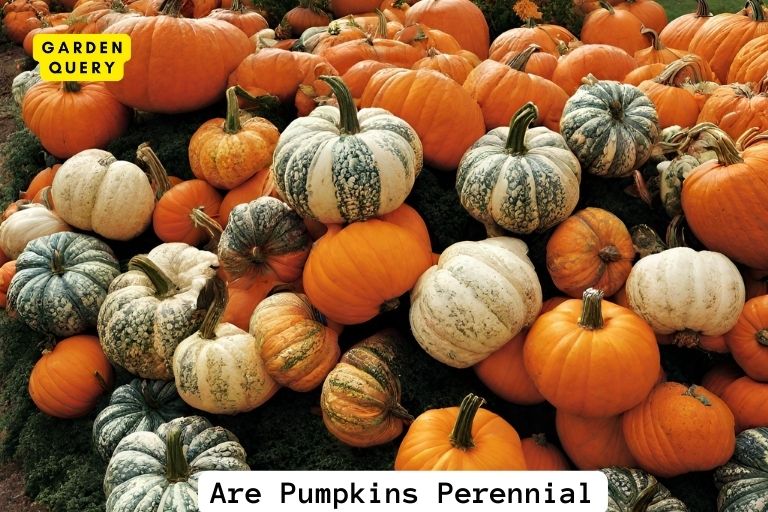Which Pumpkin To Use For Puree?
Pumpkin Varieties for Puree
When it comes to making pumpkin puree, not all pumpkins are created equal. Some varieties are better suited for puree than others. Here are a few pumpkin varieties that are perfect for making that creamy, delicious puree:
1. Sugar Pie Pumpkins: These are the most commonly used pumpkins for puree. They have a sweet and smooth flesh, making them perfect for pies, soups, and other pumpkin-based dishes. Sugar pie pumpkins are small to medium-sized, usually weighing between 4 and 8 pounds. They have a deep orange color and a rich, sweet flavor.

2. Cinderella Pumpkins: Also known as Rouge Vif d’Etampes, Cinderella pumpkins are medium to large-sized pumpkins with a distinctive reddish-orange color. They have a dense and creamy flesh that is ideal for pureeing. Cinderella pumpkins are great for making pies, custards, and even pumpkin butter.
3. Blue Hubbard Squash: While not technically a pumpkin, blue Hubbard squash can be used as an excellent alternative for pumpkin puree. It has a vibrant blue or gray exterior and a bright orange flesh. Blue Hubbard squash has a sweet and nutty flavor, making it perfect for pies, breads, and desserts.
4. Red Kuri Squash: Another non-pumpkin option, red kuri squash is a small to medium-sized squash with a deep orange-red skin. Its flesh is smooth, dense, and perfect for pureeing. Red kuri squash has a slightly sweet and nutty flavor, which makes it a great choice for soups and baked goods.
5. Long Island Cheese Pumpkins: These pumpkins are named for their resemblance to a wheel of cheese. They have a pale, tan-colored skin and a sweet, slightly nutty flesh. Long Island cheese pumpkins are ideal for making pies, breads, and muffins.
When selecting pumpkins for puree, remember to choose ones that are heavy for their size, indicating a higher water content. Look for pumpkins that are free from bruises, blemishes, and soft spots. It’s also important to note that larger pumpkins tend to have a more watery and less flavorful flesh, so it’s best to stick with smaller to medium-sized pumpkins.
Now that you know which pumpkin varieties are best for puree, you can confidently choose the perfect pumpkin for all your fall recipes. Don’t be afraid to experiment with different varieties to find your favorite flavor and texture. Happy pureeing!
Characteristics of Ideal Pumpkins
When it comes to choosing the right pumpkin for puree, there are a few key characteristics you should keep in mind. These factors will help ensure that you end up with a smooth and flavorful puree that is perfect for your fall recipes.
1. Sugar content: Look for pumpkins that are labeled as “sugar” or “pie” pumpkins. These varieties tend to have a higher sugar content, which translates to a sweeter and more flavorful puree.
2. Size: Smaller pumpkins are typically better for puree. They have a higher flesh-to-seed ratio, which means more pumpkin flesh to work with. This makes them easier to puree and results in a smoother consistency.
3. Texture: The ideal pumpkin for puree should have a smooth, dense, and finely grained texture. Avoid pumpkins with stringy or watery flesh, as they may result in a watery puree.
4. Color: Look for pumpkins that have a deep orange color. This indicates ripeness and maturity, which often translates to better flavor and texture in the puree.
5. Stem: Check the stem of the pumpkin. A fresh green stem indicates that the pumpkin is recently harvested and will likely have better flavor and texture.
6. Weight: Pick up the pumpkin and feel its weight. A heavy pumpkin typically indicates that it is dense and has a higher moisture content, which can result in a smoother puree.
7. Skin: The skin of the pumpkin should be firm and free from blemishes or soft spots. Any soft spots or moldy areas can indicate spoilage or rot.
By keeping these characteristics in mind, you can ensure that you choose the ideal pumpkin for puree. Remember to store your pumpkin properly after purchasing, as this will also contribute to the quality of the puree. Enjoy the process of transforming your pumpkin into delicious fall treats!
Preparing Pumpkin for Puree
When it comes to making pumpkin puree, it is important to choose the right pumpkin. Not all pumpkins are ideal for pureeing, as some varieties are better suited for carving and decoration purposes. So, how do you select the perfect pumpkin for puree?
Pumpkin Varieties:
First, it is important to be familiar with the different pumpkin varieties available. While carving pumpkins like the Jack-o’-lantern may be readily available during Halloween, they are not the best choice for making puree. Instead, look for pumpkins specifically labeled as pie pumpkins or sugar pumpkins. These varieties have a sweet flesh and smooth texture that is perfect for pureeing.
Size and Color:
When selecting a pumpkin for puree, size does matter. Look for small to medium-sized pumpkins, typically around 4 to 8 pounds. These pumpkins are usually sweeter and have a smoother texture compared to larger ones. In terms of color, choose pumpkins that have a deep orange hue. This indicates that the pumpkin is mature and flavorful.
Stem and Skin:
Inspect the stem of the pumpkin before purchasing. A sturdy, firmly attached stem is an indication of a fresh pumpkin. Avoid pumpkins with a loose or dried stem, as it may indicate that the pumpkin is no longer fresh. Additionally, examine the skin of the pumpkin. It should be firm and free from any soft spots, mold, or cracks.
Preparation:
Once you have selected the perfect pumpkin, it is time to prepare it for puree. Start by washing the pumpkin thoroughly with water to remove any dirt or debris. Then, carefully cut off the stem and slice the pumpkin in half. Scoop out the seeds and pulp using a spoon or ice cream scoop. Don’t throw away the seeds, as they can be roasted for a delicious snack!
Next, place the pumpkin halves on a baking sheet lined with parchment paper. Bake the pumpkin in a preheated oven at 375°F (190°C) for about 45 to 60 minutes, or until the flesh becomes tender. Allow the pumpkin to cool before scooping out the cooked flesh.
Finally, puree the cooked pumpkin flesh using a blender, food processor, or immersion blender. Blend until the consistency is smooth and free from lumps. If the puree appears watery, strain it through a fine-mesh sieve or cheesecloth to remove excess moisture.
With these simple steps, you can prepare the perfect pumpkin for puree that will enhance the flavor of your favorite fall recipes. Enjoy the creamy, homemade goodness of pumpkin puree in pies, bread, soups, and more!
Making Homemade Pumpkin Puree
Making your own homemade pumpkin puree can add a delicious and fresh flavor to your fall recipes. While you can find canned puree at the store, there’s something satisfying about making it from scratch. Here’s a guide to help you choose the right pumpkin for your homemade puree.
First, it’s important to select the right variety of pumpkin. Not all pumpkins are suitable for baking and pureeing. Look for sugar pumpkins, also known as pie pumpkins, which are smaller and sweeter compared to the larger carving pumpkins. Sugar pumpkins have a smoother texture and are easier to work with when it comes to pureeing.
When you’re at the store or pumpkin patch, examine the pumpkin’s appearance. Choose one that is firm, free from blemishes, and feels heavy for its size. A good-quality pumpkin will have a rich orange color and a sturdy stem.
Once you’ve selected your pumpkin, it’s time to prepare it for pureeing. Start by preheating your oven to 375°F (190°C). Wash the pumpkin thoroughly to remove any dirt or debris. Then, using a sharp knife, carefully cut off the top and bottom of the pumpkin. Slice it in half vertically and scoop out the seeds and stringy pulp with a spoon.
Next, place the pumpkin halves cut side down on a baking sheet lined with parchment paper or aluminum foil. Roast them in the oven for about 45-60 minutes, or until the flesh is tender when pierced with a fork. The exact cooking time will depend on the size and variety of the pumpkin.
Once the pumpkin is cooked, remove it from the oven and let it cool for a few minutes. Once it’s cool enough to handle, use a spoon to scoop out the flesh from the skin. Transfer the cooked pumpkin to a blender or food processor and blend until smooth and creamy.
If you’re planning to use the puree right away, it’s ready to be incorporated into your favorite recipes. However, if you have more puree than you need, you can freeze it in airtight containers or freezer bags for future use. Be sure to label and date the containers to keep track of how long they’ve been stored.
Making your own pumpkin puree is a simple and rewarding process that allows you to enjoy the freshness and flavor of homemade ingredients. By choosing the right pumpkin and following these steps, you’ll have a delicious base for all your fall
Conclusion
In conclusion, when it comes to choosing which pumpkin to use for puree, the best option is the sugar pumpkin, also known as the pie pumpkin. This variety has a sweeter and more flavorful flesh, making it perfect for creating delicious pumpkin puree.
While other types of pumpkins can be used for puree, such as the Cinderella or Fairytale pumpkins, they may have a less pronounced flavor and a more watery consistency. If you’re looking to achieve a rich and velvety puree, the sugar pumpkin is the way to go.
Remember to look for sugar pumpkins that are small to medium in size, with a deep orange color and a firm skin. These characteristics indicate that the pumpkin is mature and will yield the best quality puree.
Once you have selected your sugar pumpkin, the process of making puree is quite simple. Start by cutting the pumpkin in half and removing the seeds and stringy pulp. Then, place the pumpkin halves face down on a baking sheet and roast them in the oven until the flesh becomes soft and easily scoopable. Finally, scoop out the flesh and puree it in a blender or food processor until smooth.
By using the right pumpkin and following these steps, you’ll be able to create a delicious homemade pumpkin puree that can be used in a variety of recipes, from pies and breads to soups and sauces.
So, next time you’re in the market for pumpkins, don’t forget to look for the sugar pumpkin for all your puree needs. Enjoy the rich, creamy, and flavorful results that this wonderful variety has to offer. Happy cooking!
- Best Therapists In Dallas - February 1, 2024
- Holly Willoughby Husband: Holly Willoughby’s Love Story - January 30, 2024
- Holly Willoughby Dress: 5 Style Secrets and 7 Must-Know Career Milestones - January 30, 2024





